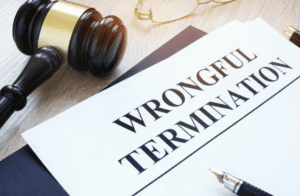
In our last post, “What Money Damages Can I Recover in an Employment Lawsuit? Part 1,” we started discussing what types of money damages you can recover if you prevail in your case. In this blog, we’ll review capped damages, which include pain and suffering and punitive damages.
Table of Contents
ToggleWhat Are Capped Damages?
These damages are, by law, capped or limited to a maximum level that is based on the size of the employer. These caps are as follows:
| Size of Employer by Employees | Damages Cap |
| 15 – 100 | $50,000 |
| 101 – 200 | $100,000 |
| 201 – 500 | $200,000 |
| Greater than 500 | $300,000 |
The theory behind the caps is that an employee’s win should result in a noticeable financial loss for the employer but should not put the employer out of business. The law assumes that smaller employers, with fewer employees, are less able to afford a large award of damages. This certainly makes some sense—as a society we don’t want to put a good small company out of business just because of one rogue manager. Still, this reduces the leverage that an employee has over a company. That’s particularly true since these caps have not been adjusted for inflation over the years. Fifty thousand dollars today is not worth what it was 30 years ago. These caps means that a jury could return a multimillion dollar verdict, most of it for pain and suffering and punitive damages, and the most a giant company would have to pay would be a paltry $300,000, plus noncapped damages, which tend to be low.
(As an aside, this is also why it can be difficult to find employment lawyers who represent employees and why you don’t see them advertise as often on TV. These damages caps make employment cases less lucrative.)
Important Tip: How to Avoid the Caps
You can sometimes avoid these caps by filing a discrimination case under state law. The District of Columbia and some states, including New Jersey and California, have their own laws that do not cap these damages. So, if you file your case in state court in these states, you have the potential to win a much higher verdict.
For instance, a California jury recently awarded a former employee $185 million dollars for her pregnancy discrimination lawsuit. All but $872,000 of that award was in punitive damages. If this case had been heard in federal court, the punitive damages would have been capped, by law, at $300,000. But Ms. Juarez was smart. Her attorney filed the case under the California antidiscrimination law, which has no damages cap. Therefore, she won over 100 times as much. You can read more about this case in my Huffington Post article “What You Should Know About AutoZone’s $185 Million Pregnancy Discrimination Case.”
Sadly, this means that justice in large part depends on where you live. If Ms. Juarez had lived in Virginia, which lacks a robust state antidiscrimination law, rather than California, the same conduct by AutoZone would have resulted in damages of $1,172,000 ($300,000 in capped damages plus $872,000 in noncapped damages) rather than $186,000,000.
Types of Capped Damages
 There are two categories of capped damages.
There are two categories of capped damages.
Emotional Distress and Loss of Enjoyment of Life
Also known as “pain and suffering,” this category of damages is pretty much what it sounds like. An employee who wins a lawsuit is entitled to be “made whole again” or returned to the same place she was before the wrongdoing. Of course, in reality, that is impossible. You can’t uncry the tears, erase the months of stress and anger, or repair relationships that were damaged as a result of what your company did to you. The only thing that courts and juries can actually do is to try to put a price tag on your suffering. It’s a crude measure, yes, but it is the only blunt tool available for our legal system to use.
Punitive Damages
Punitive damages are damages above and beyond the actual damages you suffered. Their purpose is to punish your employer for intentional wrongful conduct and to deter other companies from doing the same thing. Usually, conduct has to be shown to be egregious or particularly harmful to warrant punitive damages. And don’t worry: while punitive damages exist to punish and deter discrimination, the award still gets paid to you.
Summing It Up
Both pain and suffering and punitive damages may be subject to caps, or limits, under the law. There are sometimes ways to avoid these caps, such as filing under a state law instead of federal law. However, not all states have strong antidiscrimination protections.
Do you know whether you live in a state that caps damages? We’d love to help you find out and assess your case. Just contact an attorney and we’ll help you evaluate what your case may be worth.





